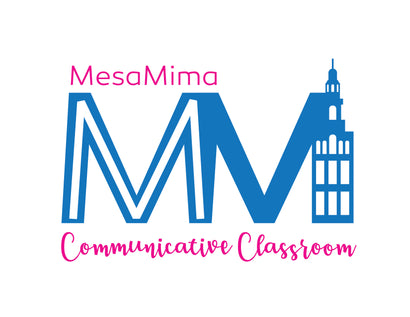
Presentations in the three modes: make learning stick!
Do your students ever give presentations where at least one person in each group is just riding coattails?
You know what I mean: three students in the group OWN the information and could answer any question, but the one outlier knows a little bit about just a little bit? The worst.
Plus, that frustrates all of the kids in the group.
So how about this? EVERY student in EVERY group presents the same presentation. I know what you’re thinking: snoozefest, but KEEP READING.
My students recently completed an amazing presentational task in our Familias y comunidades unit in AP. Each of 11 groups created a flier to encourage the public to donate to various community projects in the Spanish speaking world. For example, they investigated (interpretive mode) groups like Arte de los Sueños and Fundación Saraki, then created the flier to demonstrate important information (presentational writing). The next step was presentational speaking to share the information that they had discovered.
However...bottleneck. Eleven groups is a lot of presenting. In groups of 4, that usually means for some of those more thorough students to talk, and talk and talllllllkkkkk. That’s a lot of time, and by the end, a lot of boredom. Not this time.
HERE'S WHAT WE DID
STEP 1
Students in each group numbered off, one through 4. We had 4 rounds. Each student would present their flier to small groups (low affective filter!) in one of the rounds.
While not presenting, the other three group members visited other presentations, ensuring that someone from each group saw all 11 presentations, and group members were never together. Each student took basic notes. For our task, these included:
- Location of the community project
- Goal or focus of the project
- Community impact (number of people or number of communities served)
- Details or differences with their own project
In other words, the notes shouldn’t be overly detailed. Just the basics to share with their team.
While this was going on, I walked around the class and just took notes. I gave a few shout outs for great things that I noticed and made some other recommendations.

FEEDBACK
“More pictures on your flier would make a greater impact on the audience”
“When you’re presenting, avoid reading from the presentation so that you demonstrate what you know. Otherwise, it seems that you don’t know the information”
“The best presentations that I saw included questions and conversation at the end”
This feedback was our first phase in some formative, constructive criticism, plus focuses on the soft skills that are not part of the rubric, but that really lend to acquisition of knowledge and not just regurgitating information.
STEP 2
After the four rounds were complete, the students returned to their original groups to decide who they wanted to debate against (interpersonal speaking). This required that each member reflect on the presentations that they had attended and that they share information with the rest of the group. They provided their top 3 choices and I paired them together for debates the next day.
STEP 3
I don’t assign a lot of homework, but that night, students were able to complete some research on the opposing group, to be able to formulate their ideas and prepare a rebuttal. I ended up pairing them in groups of three different community projects. The debate surrounded this topic:
I have $5000 to donate to a community project. Which of the three should I choose? They discussed things like number of people that they impact, how rural and inaccessible some of the projects are, need of the community, and lack of exposure (for example, Arte de los Sueños has a famous founder with an extensive reach...they don't need the money as much as Fundación Saraki). Some even pulled on my heartstrings and talked about the importance of education. Swoon.
The best part is that they felt really tied to their foundation and were really thoughtful (and a bit brutal!).
Some additional reflection on the format:
- I really enjoyed getting a glimpse into the kids’ styles, presentation skills and comfort level.
- The kids appreciated not having to present in front of everyone.
- All members of each group had to know ALL of the information, not just “their part”.
- This process took us 20 minutes, including my instruction and transitions. To complete all 11 presentations would have taken way longer.
- Evaluation was of the presentational writing (flier) and the debate. The rest was formative feedback.
- Including all three modes was the icing on the cake!
- THE BEST PART: the groups came away with high levels of understanding of multiple groups’ community projects, after the presentations, research and debate!
I can't wait to use this with other presentations, and to see it in action in the lower levels, especially as we work to develop the soft skills of quality presentations and of written presentational tasks.
Have you tried anything like this before?
Want this task? Check out our Familias y comunidades unit here!
Leave a comment
Comments will be approved before showing up.



